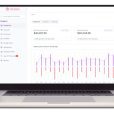We were surprised last week by the reaction to the slightly better than expected US CPI monthly report. In aggregate the headline month-on-month CPI rate was flat versus a 0.1% forecast and core inflation was 0.2% versus 0.3% expected. A great deal of care needs to be taken when interpreting monthly data because inflation readings are subject to seasonal influences. On an annualised basis the headline inflation rate was 3.2% (versus 3.3% expected) and core CPI was 4% (versus 4.1% expected). On the face of these aggregate numbers it is hard to understand why the bond market and for that matter the equity market reacted so strongly. Fundamentally, with unemployment still well below the full employment estimate from the Federal Reserve and wages growth still so strong it is only a matter of time before inflation begins to rise again. The fall in inflation to date reflects the abatement of the “transitory factors” from the pandemic. In the next phase we see demand-driven inflation.

Even when we look into the data it is clear that the disinflationary impacts are all connected to the fall in the oil price while services inflation remains sticky. The following graph from the Financial Times displays just how much the fall in Energy, Energy commodities and Gasoline were a key part of offsetting the sticky prices elsewhere. Consumer Price Index Summary – 2023 M10 Results (bls.gov)

Why then did the market react so much to the inflation report? The answer is the fall in shelter costs. The stale bond bulls have been crying for 12 months now that if you took the rise in shelter costs out of the CPI data then inflation was only moderate and the Federal Reserve should not be increasing rates. Obviously the Federal Reserve did not make the same convenient interpretation because the nature of inflation is that it rolls out into an economy with lags that are difficult to measure. The purpose of the CPI basket is to present a fair representation of inflation in aggregate for the average household. The fact that shelter costs appear to have stopped rising in the US was seized upon by a desperate bond market that chose to ignore that services inflation is the current driver of inflation.
Next month it is unlikely that we will see another large drop in the oil price because it has already fallen to a level where previously OPEC+ have reacted to cut supply, we are almost now into the northern hemisphere winter and the US government must shortly begin to rebuild the strategic oil reserve. The fact that it has not already begun to do so given the increase in geopolitical risk is a sad reflection of a White House deluded by the magical promises of renewable energy and the ability to ignore that with every new day global population increases.

In an Australian context the stronger than expected employment data last week that showed jobs growth at a full and part time level signals that the interest rate increases to date have had very little impact and we now have confirmed that wages growth has lifted above 4%. If we combine the rise in wages with the fall in labour productivity we get the rise in the unit labour cost depicted in the chart below (green dashed line). It is worth noting that while US wages growth occurred at the onset of the pandemic lockdowns – sensibly explained by labour being locked in homes – Australian wages began to rise post the pandemic lockdowns. US wages growth is still too high for inflation to return to the target anytime soon and rising wages in Australia today are the inflation problem of tomorrow.

Interest Rates
Long bond rates continued to fall after soft US inflation data gave the lowest underlying inflation rise in two years. The annual CPI rate climbed 3.2% after rising 3.7% in September. The core CPI increased 0.2% to now be 4.0% on a year-on-year basis. After the CPI news, economic data suggested the US economy is cooling further which gives more strength to the argument that the Fed is done raising rates. The US yield curve is starting to invert again. After rising from -1% in March to near zero in late October, it has fallen again to -0.45%.
UK inflation falls sharply with lower energy prices. Annual inflation is now 4.60% from 6.7% in Sept. Australia is still at a stubborn 5.40% lagging the world.
Moody’s lowered its debt rating for US gov. debt, but this only brings it into line with S&P and Fitch which both have US debt at one notch under AAA.
Australian rates followed the US lead with falls across most of the curve being near 0.15%. Over the past month, Aust. long bond rates have moved above US rates, reflecting the increased risk profile of Australia.

Major Credit Markets
US IG spreads rallied strongly again with markets comfortable recent risks are abating. Equities also posted a strong week. Investment grade (IG) markets were buoyed by Fed comments re its attitude to be patient and let the previous rate rises consolidate their effects.
Australian IG markets were also firm. Investors were active, evidenced by recent Rabobank ($825m of 5-year bonds at BBSW+1.15% rated A+) and Suncorp ($1.15 bill 3.5-year senior bonds at BBSW+1.10% rated A) issues which are each bank’s largest ever AUD transactions. Buying is good across all rating groups with bank senior bonds strong as well as some rebound in sub note margins after recent weakness in longer-dated issues.

High Yield Markets
The US high yield (HY) market rallied again as volatility dropped out of firm equity markets and the softer CPI print. The Russell 2000 index rallied 5.42% for the week and now is +8.15% MTD, more accurately reflecting sentiment towards US HY. Issuance has also been strong.
The hybrid market was slightly firmer this week with the average major bank hybrid margin falling by 5pts to 2.82%, reversing the recent trend. Nevertheless, this level is well above that in early October, and in a period of past weeks where credit markets have been strong (see next page).
The new Judo bank hybrid (JDOPA) commenced trading with only $70,000 of volume on day 1 at a price well above face value $100.90, representing a margin of 6.32%. Judo issued $75m of a 5.5 year (Feb 2029) to first call date hybrid at a 6.50% margin.
The market still waits for the announced Westpac hybrid to be issued. Comparative long-dated major bank hybrids are trading at 3.00%.

Listed Hybrid Market
Hybrid margins readjust from 2022’s “new’ relative paradigm
You could have been forgiven believing that hybrids, under a rising interest rate scenario, had been “rerated” relative to general credit markets because of their easy access to the rising cash rate. Now that rates appear toppy, some yield buyers have switched focus to fixed rate bonds to gain yield. We assess the relative merits of fixed vs. floating rate yield below, however we first show the average major bank hybrid margin relative to the iTraxx index, an index of Australia’s top 25 corporate borrowers’ senior debt trading margins, including the major banks and Macquarie. The latest ratio of hybrid margin/iTraxx is spot on the long-term average. The period as boxed was when rate rises accelerated and hybrid yields were a beneficiary. For some ASX investors, hybrids were one of the few methods to gain exposure to the rising cash rate. We have described in recent weeks the role of hybrid IPO impacts on trading liquidity and margins. As mentioned last week, the announcement by Westpac that an issue is forthcoming saw margins move wider. The market is still in that mindset. Once the issue is cleared, secondary buying will return and if the iTraxx margin is still tight (a high ratio in the chart below), hybrids will be bought strongly on a relative basis.

Fixed vs. floating rate exposure
Bank bills, the reference rate for FRNS, are currently 4.40%. 2-year bonds are 4.16%, 5 year 4.15% and 10 year 4.473%. This is a U-shaped yield curve. This discussion will initially focus on gov. bond rate, credit spreads introduced later:
- Fixed rate bonds carry capital repricing potential; if rates fall a positive pricing gain (about +4.50% in capital price for a 5-year fixed rate bond). If rates rise there is a potential capital price fall of about -4.5%. This is no big deal if you intend definitely to hold for the 5 years, however in reality it is an opportunity loss in that a higher yield may have been obtained. If one is expecting a possible sharp fall in bond rates due to a major shock to markets, then buy long-term bonds. Note however in recent years, the shock to markets has been from quickly rising long bond rates! Note in past weeks bond rates across the curve have fallen some 0.18-0.40%. Some of the protective features of fixed rate bonds has occurred.
- The yield curve is currently U shaped, there is currently no positive yield curve to rationalise buying longer-dated debt to increase potential yield. Currently buying 5-year fixed debt gives up 0.25% in yield to BBSW.
- The RBA has just raised the cash rate. For the foreseeable term (6 months) it is very unlikely the cash rate will be reduced. And if cash rates continue to rise, FRNs benefit from their next coupon rate rising within 3 months.
- In a scenario that rates fall quickly, it is too late to buy fixed rate bonds. Once the shock occurs, markets move the bond rate very quickly. The bond capital price moves in hours not days. However, what is often not realised is there is no capital pricing risk on FRNs. If the BBSW rate falls instantly the capital price does not change. In reality however the RBA will not drop rates straight away. Markets may forecast this in the BBSW rate (that is moving it below the cash rate). Even if they do, again no capital price risk. Hence FRN holders can act to a falling rate scenario later as they have not missed out on the beginning of a price rally as a fixed rate bond would have enjoyed.
- In regard to credit spreads. Under a stress event it is likely credit spreads move wider. This would be the case for a fixed or floating rate bond. In comparison, a 1% move in credit spreads results in approx. the same capital price change for a fixed or floating rate bond. There will be an effect, however fixed and floating rate bonds are equal for this parameter. Buying a fixed rate corporate bond with the rationale that there is some price gain if rates fall can be negated if credit spreads move wider. A 1% fall in a fixed rate corporate bond’s reference rate will be entirely negated if credit spreads move wider by 1%.
Conclusion. Firstly, the flat yield curve gives fixed rate bonds no yield advantage (even a disadvantage for 2-5 year bonds). Secondly, the RBA has just increased the cash rate. Thirdly, given FRNs bear no capital repricing risks, FRNs are a better yield proposition right now. There is only one reason to hold fixed rate bonds – looking for capital protection in a scenario of a major shock to markets causing long-term bond rates to fall.
Forward Interest Indicators
Australian rates
Swap rates fall along with Comm. gov. bond rates. The yield curve is U shaped, 2-3 year swaps trading under BBSW and the 10-year rate.
Swap rates:
- 10-year swap 4.73%
- 7-year swap 4.58%
- 5-year swap 4.46%
- 1-month BBSW 4.29%

Arculus Funds Management is an Australian asset manager of both public and private mandates.
They manage two retail public unit funds for DDH Graham:
- The Arculus Preferred Income Fund, formerly the DDH Preferred Income Fund
- The Arculus Fixed Income Fund, formerly the GCI Australian Capital Stable Fund
Platform Availability: BT Wrap / BT Panorama / Macquarie / Netwealth / Hub24 / Praemium / OneVue / Australian Money Markets / Ausmaq
- Market at a pivot point as inflation surge likely to return in March | Economic update - December 12, 2023
- Are we in the eye of the inflation storm? | Economic update - December 5, 2023
- The Bank of Japan doesn’t remember how inflation works | Economic update - November 28, 2023













Leave a Comment
You must be logged in to post a comment.